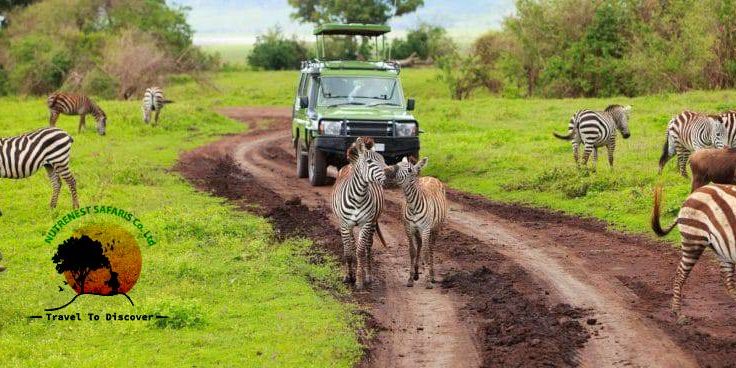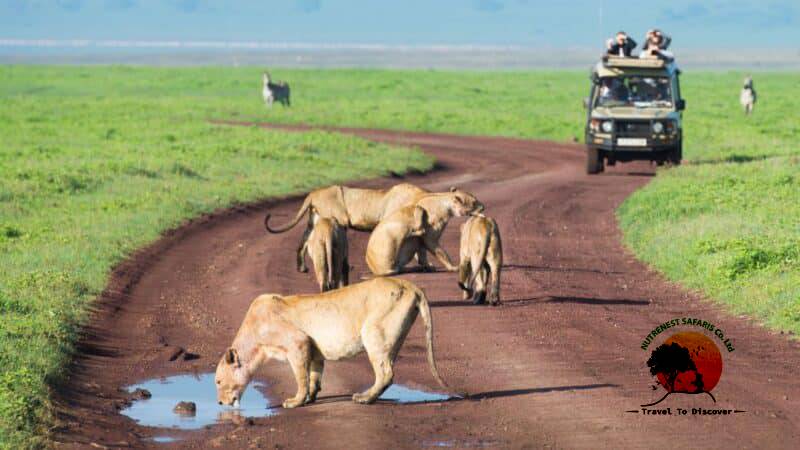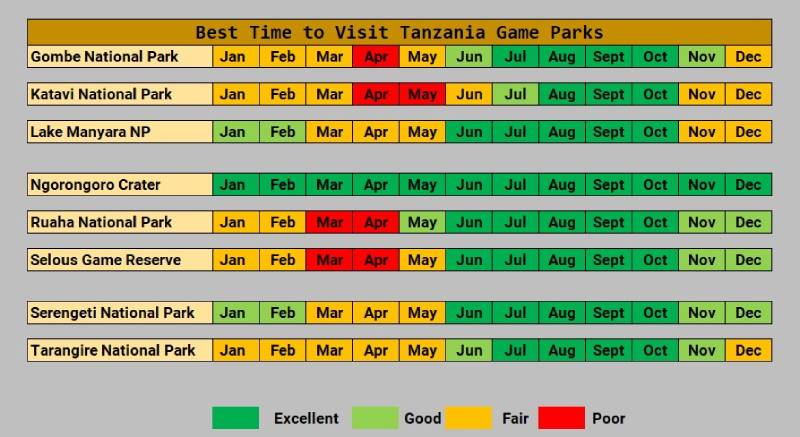Tanzania is a dream destination for many travelers, offering some of the best wildlife experiences in the world. With its diverse landscapes, abundant wildlife, and rich cultural heritage, Tanzania is an unparalleled safari destination. If you’re planning a safari in Tanzania, you might have a few questions: How much does it cost? Is it safe? When is the best time to go? And how many days do you need? In this guide, we’ll explore these questions and more to help you plan the perfect Tanzania Wildlife Safari.
How Much Does a Safari Cost in Tanzania?
The cost of a Tanzania safari can vary widely depending on several factors, including the time of year, the type of accommodation, the duration of the safari, and the level of luxury you desire. Here’s a breakdown of what you can expect:
Budget Safaris
For budget travelers, Tanzania offers affordable safari options that typically cost between $150 to $300 per person per day. These safaris often include basic accommodations such as tents or budget lodges, and shared transportation in standard safari vehicles. Budget safaris are a great way to experience the wonders of Tanzania without breaking the bank.
Mid-Range Safaris
Mid-range safaris provide a balance between comfort and cost, with prices ranging from $300 to $600 per person per day. These packages usually include stays in comfortable lodges or tented camps, private or small-group transport, and additional amenities such as guided tours and meals.
Luxury Safaris
For those seeking a more luxurious experience, luxury safaris in Tanzania can cost anywhere from $600 to over $1,500 per person per day. These safaris feature high-end lodges, exclusive tented camps, gourmet meals, private guides, and often include extras such as hot air balloon rides or private game drives.
All-Inclusive Safari Packages
Many tour operators offer all-inclusive Tanzania safari packages that cover everything from accommodations and meals to park fees and guided tours. These packages can simplify planning and ensure a seamless experience, with costs varying based on the level of luxury and duration.
Additional Costs
When budgeting for your Tanzania safari, remember to factor in additional costs such as international flights, visa fees, travel insurance, tips for guides and staff, and any optional activities or excursions not included in your package.
How Safe is a Tanzania Safari?
Safety is a common concern for travelers considering a safari in Tanzania, and rightfully so. Fortunately, Tanzania is generally considered a safe destination for tourists, including those on safari. Here are some key points to consider:
 Wildlife Safety
Wildlife Safety
When on a Tanzania Wildlife Safari, your safety around animals is paramount. Professional guides are well-trained to handle encounters with wildlife and will provide clear instructions to ensure your safety. Always follow your guide’s advice and maintain a safe distance from animals.
Health Precautions
Tanzania is a tropical country, so taking health precautions is essential. Ensure you have all necessary vaccinations before traveling, such as those for yellow fever, typhoid, and hepatitis. Malaria is present in Tanzania, so take antimalarial medication and use insect repellent to prevent mosquito bites.
Crime and Personal Safety
While Tanzania is generally safe, petty crime can occur, especially in urban areas. To stay safe, avoid displaying valuables, keep your belongings secure, and be cautious when walking alone at night. When on safari, your guides and accommodations will prioritize your security.
Travel Advisories
Before traveling, check the latest travel advisories from your government. These advisories provide valuable information on current safety conditions and any potential risks in Tanzania.
Reliable Operators
Choosing a reputable safari operator is crucial for a safe and enjoyable experience. Look for operators with good reviews, proper licensing, and experienced guides. Reputable companies will prioritize your safety and provide reliable services.
What is the Best Time to Go on Safari in Tanzania?
The best time for a Tanzania Wildlife Safari depends on what you want to see and experience. Tanzania offers great wildlife viewing year-round, but certain times of the year can enhance your experience.
 Dry Season (June to October)
Dry Season (June to October)
The dry season is considered the best time for a Tanzania safari. During this period, the weather is dry and sunny, and wildlife is easier to spot as animals gather around water sources. The famous Great Migration, where millions of wildebeest and zebras move across the Serengeti, typically takes place from June to July (river crossings) and in September to October (northward migration). The dry season is ideal for game drives and walking safaris.
Wet Season (November to May)
The wet season, also known as the green season, has its own unique appeal. From November to March, the landscape is lush and green, and many animals give birth, providing opportunities to see newborns. Birdwatchers will enjoy the abundance of migratory birds. The wet season also means fewer tourists, resulting in more intimate wildlife experiences and lower rates on accommodations and safari packages.
Shoulder Seasons
The shoulder seasons (April to May and November) offer a mix of dry and wet season advantages. April and May can be rainy, but the scenery is stunning, and prices are lower. November offers good weather, fewer crowds, and still excellent wildlife viewing opportunities.
How Many Days is Enough for a Tanzania Safari?
The ideal duration for a Tanzania safari depends on your interests, budget, and the specific areas you wish to explore. Here are some common options:
Short Safaris (3-5 Days)
A short safari of 3 to 5 days is perfect for those with limited time. This duration allows you to visit one or two key parks, such as the Serengeti and Ngorongoro Crater. You can experience the highlights of these iconic destinations and witness a variety of wildlife.
Week-Long Safaris (7-10 Days)
A week-long safari provides a more comprehensive experience, allowing you to explore multiple parks and regions. You can combine visits to the Serengeti, Ngorongoro Crater, Tarangire National Park, and Lake Manyara. This duration offers a well-rounded safari experience with diverse landscapes and wildlife.
Extended Safaris (10-14 Days)
For those with more time, a 10 to 14-day safari allows for in-depth exploration of Tanzania’s rich ecosystems. You can venture off the beaten path to less-visited parks like Selous Game Reserve, Ruaha National Park, and Mahale Mountains National Park. Extended safaris offer a deeper connection with nature and opportunities for unique experiences such as chimpanzee trekking and boat safaris.
Customizable Safari Packages
Many tour operators offer customizable Tanzania safaris packages to suit your preferences. Whether you want a quick getaway or an extended adventure, you can tailor your itinerary to include specific parks, activities, and accommodations.
Final Thoughts
A Tanzania Wildlife Safari is a once-in-a-lifetime experience that offers unforgettable encounters with nature. Whether you’re on a budget or seeking luxury, Tanzania has a safari package that will meet your needs. With careful planning and consideration of the best time to visit and the ideal duration for your trip, you can ensure a safe and memorable adventure.
At Nature Nest Safaris, we are dedicated to providing exceptional Tanzania safari experiences. Our knowledgeable guides, well-planned itineraries, and commitment to safety and sustainability ensure that your safari is not only unforgettable but also responsible. Contact us today to start planning your dream Tanzania Wildlife Safari and embark on an adventure of a lifetime.


 Wildlife Safety
Wildlife Safety Dry Season (June to October)
Dry Season (June to October)




